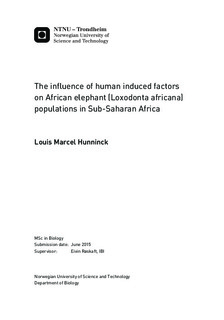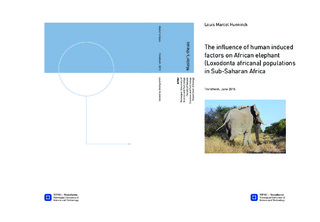| dc.description.abstract | Numerous studies have been done on the conservation of the African elephant (Loxodonta africana) yet too few studies have focused on comparing the ultimate factors that influence the African elephant populations. Here, we looked at several human induced factors that reflect parts of the Human Elephant conflict and tried to find which one of those had the most important effect on African elephant populations in Sub-Saharan countries. Agricultural activity and deforestation together with increasing human population density and poaching all have a negative effect on elephant populations. However, we found that poverty, measured by per capita income, was by far the most significant factor affecting elephant populations. This variable translates in not only individual poverty that results in lucrative poaching, but also in national economical and political stability, which is essential for effective conservation management. Furthermore, our results show that, in order to protect the African elephant, tackling the poverty problem is more important than creating new protected areas. | |

